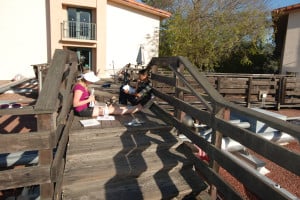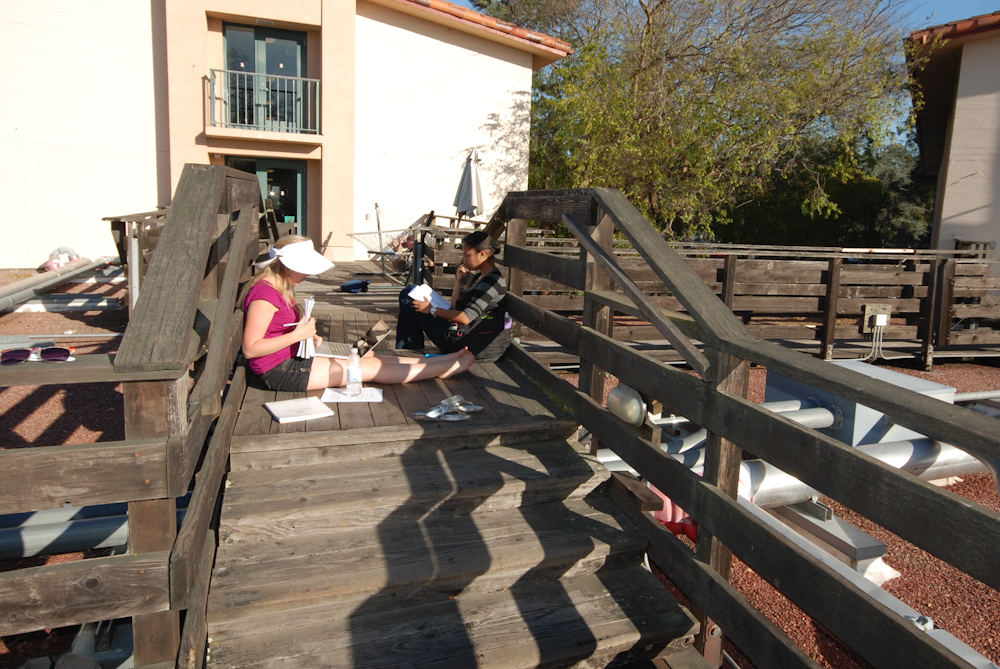Starting this summer, the rooftop catwalks of Florence Moore Hall (FloMo) will be removed in a change that has prompted protest from some current residents.
“[The catwalks] are a place for all of us to hang out in the afternoons and talk,” said Reade Levinson ’16. “People do yoga, have conversations, stargaze…It’s one of those rare gems, like the Lane Reading Room…one of those awesome parts of campus that you’re lucky to find.”

Rodger Whitney, executive director of Residential and Dining Enterprises (R&DE) Student Housing, wrote in a statement to The Daily that the walkways “are in a deteriorated condition, do not meet current ADA [Americans with Disabilities Act] accessibility standards, and must be removed in order to replace the flat roof.”
According to Whitney, strict building and fire codes restrict such constructions and no other residence or new building contains the kind of walkways currently in place in FloMo.
“R&DE met with us [the Resident Fellows (RFs)] and our understanding was that it wasn’t feasible [to retain the catwalks] from a cost perspective and a county perspective, since the renovations had to be approved by the county,” said Greg Watkins ’85 Ph.D. ’03, an East FloMo RF.
Watkins lived in FloMo as a freshman and reflected that—while the catwalks weren’t used extensively—they did add to the charm of the building.
“They are an important space, a free space, an outdoor space,” Watkins said. “They have an important role to play in giving the residents multiple stations to spend their time in…They do hold the value of retreat space that’s hard to come by here at Stanford.”
Watkins noted that student reaction to the catwalks’ removal has been limited to date, attributing that trend to FloMo’s largely freshman population—and a corresponding lack of investment in dorm traditions—and the surge in the catwalks’ popularity during spring quarter.
Still, he conceded, some freshmen are passionate about the issue.
“The movement towards complaining was started by freshmen,” Watkins said. “They wouldn’t go away without investigating.”
Levinson, who originated the movement protesting the removal of the catwalks, characterized the protest as one of a number of student struggles devoted to preserving unique features of the University.
“It would be so sad if other generations wouldn’t be able to keep them,” Levinson said. “The school is on the move to become more uniform, with Suites Dining and tearing down Meyer, and keeping things like the catwalks is important to keep the school unique.”
“Right now, I’m just gauging interest,” Levinson added. “If it’s just me protesting, then it’s not worth it…I want to see how many people [are interested in protesting] before approaching Housing.”
According to Whitney, the decision to remove the catwalks balanced resident preferences with safety concerns. He added that dorms within FloMo will remain connected by existing interior walkways.
“With the roof access walkways in place, some students have climbed out windows to access them, and there have been some unfortunate falls and other injury accidents over the past few years,” Whitney wrote. “Life safety for our students is very important to us, so any project work we do always takes this into account.”
According to Whitney, R&DE administrators will meet with FloMo residents and staff in “early spring quarter” to discuss the details of the renovation.
Levinson said when she first contacted Watkins for advice on contesting the changes, she was advised to bring the issue to the attention of the larger University community.
“We could find out what Housing thinks, since they tend to respond once there’s an article, and, given their response, try fundraising or just put up a last stand,” Levinson said. “I’m pretty sure it’s a done deal but I don’t think they should go out without a fight.”
